High Altitude and Its Effect on Cooking
Most recipes and temperature guidelines are calibrated for sea-level conditions, but what if you live in a high-altitude area like we do here in Utah? The lower atmospheric pressure at high altitudes (generally 3,000 ft [900 meters] or higher is considered high altitude) can wreak havoc on your culinary performance. Knowing a few simple adjustments will be a game-changer.
Boiling Point Depends on Elevation:
The boiling point of any liquid depends on the atmospheric pressure bearing down on its surface: the higher the pressure, the more energy it takes for liquid molecules to escape the surface and become a gas, and so the higher the temperature at which the liquid boils. —Harold McGee, On Food and Cooking, pg. 785
Under (less) Pressure: Because of gravity, the higher you go, the fewer air molecules there are in a given space, so the air is less dense. Because of the lower air pressure, water molecules in a pot need less energy to escape into the air. At altitudes over 3,000 ft (900 m), the decreased air pressure may require you to alter the time, temperature, or a few ingredients in your recipe. At sea level, the atmospheric pressure is 14.7 pounds (7 kilograms) per square inch (psi); and this decreases by about 1/2 pound (1/4 kilogram) per 1,000 feet (300 m).
How Altitude Affects Cooking:
- Water and other liquids evaporate faster and boil at lower temperatures.
- Leavening gasses in breads and cakes expand more quickly.
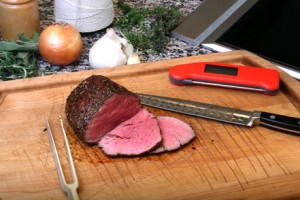
Approximate Boiling Temperatures of Water at Various Altitudes |
|
|---|---|
Altitude |
Temperature |
| Sea Level | 212°F (100°C) |
| 2,000 ft. (600 m) | 208°F (98°C) |
| 5,000 ft. (1,500 m) | 203°F (95°C) |
| 7,500 ft. (2,300 m) | 198°F (92°C) |
| 10,000 ft. (3,000 m) | 193°F (90°C) |
A Watched Pot Never Boils.
Definitely true. Avert your eyes. —The Food Lab, Kenji Lopez-Alt, pg. 99
Pressure Cookers: Pressure cookers can be a lifesaver when cooking at high altitude. Their seals are vapor tight. As the water begins to boil, the steam that takes up more space than water cannot escape and increases the pressure in the pot. You’ll be able to reach much higher temperatures than you could in the open air environment.
Moisture Loss: High altitude areas often have low humidity, which will cause water to evaporate even more quickly. Food should be covered or wrapped to avoid excessive moisture loss.
Deep-Fat Frying: The lower boiling point of water in foods requires lowering the temperature of the fat to prevent food from over browning on the outside while being undercooked on the inside. Decrease the frying temperature about 3°F (1°C) for every 1,000 ft (300 meters) increase in elevation.
Microwave Cooking: Because water evaporates more quickly at higher altitude, microwave cooking times may need to be adjusted.
- A lower boiling point may mean a longer cooking time for your food
- Since foods will leaven, or puff more with less air pressure, be sure to use containers for your food that will accommodate the increase in volume.
Thermal Tip:
Temperature adjustments are to be applied to target temperatures stated in recipes. Your thermometer’s accuracy is not compromised at high altitude and does not need to be calibrated to accommodate the conditions caused by decreased air pressure.
Candy Making: Use your Thermapen® to test the boiling point of water at your altitude. Reduce the target sugar cooking temperature by the difference between your boiling point and 212°F (100°C) to avoid sugar cooked beyond your targeted stage. This will be approximately a decrease of 2°F (1°C) for every increase of 1,000 feet (300 meters) in elevation above sea level.
Yeast Breads: With the decreased air pressure, yeast doughs will rise in a shorter period of time. The dough’s flavor is developed over time, and the shortened time compromises that quality. You can decrease the amount of yeast to lengthen the fermentation time. Additional water may need to be added so the lack of humidity combined with the quick water evaporation does not dry out the loaf.
Bread Machines:
- Decrease yeast by 1/4–1/2 tsp. for every package called for in the recipe.
- Add up to 1–2 T. of additional liquid per cup of flour in the recipe.
- Use a longer mixing cycle to allow the gluten to develop more fully. A stronger dough will withstand a more intense rise better.
Cookies: Cookies can often spread too much during baking at high altitudes; this is from high levels of sugar and fat in the cookie dough. Results can be improved by:
- Slight increase in baking temperature.
- A Slight decrease in chemical leaveners (baking powder and baking soda), sugar, and/or fat. These ingredients can cause excess spreading.
- Slight increase in liquid ingredients and flour. This will toughen the dough and help it to resist spreading.
Falling Cakes:
[A cake’s] structure is compromised further by decreased air pressure: The cakes rise too much, the structure can’t support the rise, and the cakes collapse. —Heavenly Cakes, Rose Levy Beranbaum, pg. 434
Cakes and Quick Breads: At high altitude cakes and quick breads can have excessive rising because of low atmospheric pressure. The cell structure stretches, making the resulting texture coarse, or the stretching can be so excessive that the cake will lose its structure and fall. Simple adjustments can be made to ensure your success:
- Measure accurately and reduce chemical leaveners (see table below).
- Increase baking temperature by 15–25°F (6–10°C) to help “set” the batter before cells formed during rising expand too much.
- Increased water evaporation will increase the concentration of sugar, which weakens the cell structure (because sugar weakens gluten strength). Decrease sugar and increase liquid slightly.
- Rich butter cakes can benefit from a reduction in their fat content. Fats weaken gluten strength just like sugars do. Increasing the amount of egg will strengthen the cell structure and may prevent a cake from falling.
- When making foam cakes, whip egg whites less. Soft peaks instead of stiff will allow for greater expansion during baking.

Cake Mixes: The addition of flour and liquid can help strengthen the cake batter against excessive rising, and subsequent falling. High altitude adjustments are usually provided on cake mix boxes.
Cake Recipe Adjustments for High Altitude |
|||
|---|---|---|---|
Adjustment |
3,500 to 6,500 ft. (1,000-2,000 m) |
6,500 to 8,500 ft. (2,000-2,600 m) |
8,500 to 10,000 ft. (2,600-3,000 m) |
| Reduce baking powder, for each tsp., decrease: | 1/8 tsp. | 1/8-1/4 tsp. | 1/4 tsp. |
| Reduce sugar, for each cup, decrease: | 0-1 Tbsp. | 0-2 Tbsp. | 1-3 Tbsp. |
| Increase liquid, for each cup, add: | 1-2 Tbsp. | 2-4 Tbsp. | 3-4 Tbsp. |
These tips and adjustments will be helpful in making your high-altitude cooking more successful. Trial and error will be involved as you adjust your recipes and methods. Try only one adjustment at a time so you can more easily isolate the changes occurring, and take notes through the entire process so you can repeat the change in the future. Over time, adjusting recipes to your specific conditions will become less daunting, and more second-nature.
Products Featured:
Resources:
High Altitude Food Preparation, from Colorado State University Extension


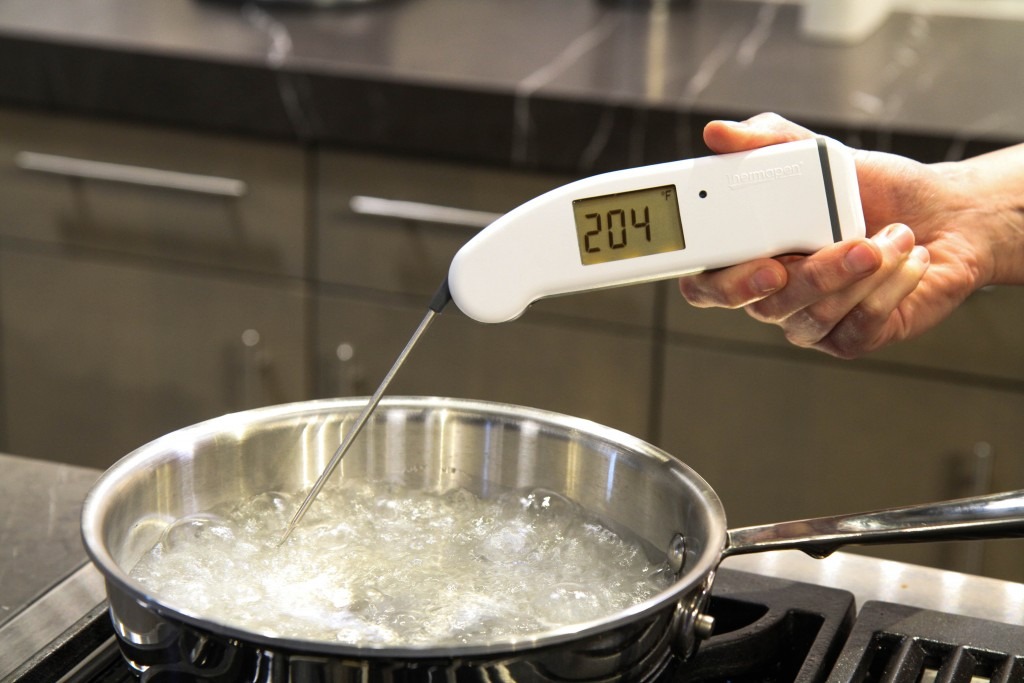
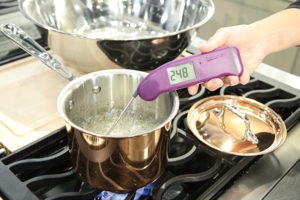
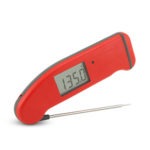
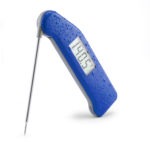
Best summary I’ve ever encountered & I’m 75 with a food degree. Live in Fl. 6 months , 67′ altitude , and Colorado- Estes Park, my house at 7867′ so we had to learn these adjustments the hard way. I agree with your chart on temps at various elevations- our boiling point in E.P. is 199.
Thank you for this good work
Bill,
199°F boiling point–wow! Altitude really makes a big difference in the kitchen, and I hope these adjustments can further improve your cooking experiences. Thank you for your comment.
Best,
-Kim
Thanks for the information! Yes living at an elevation of over 8500 presents its challenges and this information will help overcome some of them when cooking food.
The way I have purchased a number of your products for my own use and as gifts to those with a sincere interest in cooking.
Bob,
We’re at about 4,500 ft here in Utah–I can only imagine the challenges at 8,500 ft! Glad to hear the information was helpful.
Thank you,
-Kim
As a kid I found that a watched pot does boil. It just takes patience.
The complete saying is: A watched pot never boils over.
I do not understand your comment that my comment is awaiting moderation but here goes:
As a kid I found that a watch pot does boil it just takes time. My grandmother then told me the rest of the … wait for … saying. A watched pot never boils over. This is in response to the statement about the watched pot in the article on high altitude cooking.
Georgina,
The particular quote you’re referencing was a direct quote from The Food Lab written by Kenji Lopez-Alt of Serious Eats. It was intended to be read humorously. Here at ThermoWorks we appreciate Kenji’s scientific approach to cooking, and his light-hearted writing style.
Thank you,
-Kim
A good compilation of high altitude cooking information that is not easy to find in one place. I recently was making caramels and at 1000 ft with my Thermapen and ruined a couple of batches until I realized that candy temperatures needed to be adjusted.
Roasting chicken and vegetables at 9000 ft in a condo in Dillon, CO turned out to be quite a challenge because of the increased evaporation rate and lower surface temperature of the meat.
For your readers in countries using the metric system, I suggest you round elevations in this article to the nearest 100 meters to make them more user friendly. There was some rounding in the original guidelines in US units.
Martin,
Cooking challenges at our elevation is nothing to the adjustments that would need to made at 9,000 ft! It really is amazing how vastly altitude changes your approach to cooking. And thank you for the tip with the metric measurements.
Best,
-Kim
If I bake biscotti’s for 20 minutes at 350 degrees at sea level, how long should I bake it in Albuquerque, NM?
Tony,
Great question! Your altitude is similar to what ours is here in Utah–approximately 5,000 ft. Before trying to alter the recipe, adjusting the baking time is the best place to start. I always start checking whatever it is I’m baking halfway through the recipe’s suggested baking time. In your case, start checking visual doneness cues around 10 minutes into the bake. If you have issues with excess spreading add a bit more flour. You can increase the oven temperature (to about 375°F) during the beginning of the bake (the first 5 minutes) to quickly leaven and set the cookie, then reduce the temperature (to about 325°F) for the remainder of the baking time to cook the cookie all the way through.
Thank you for your question, and let us know if you need more help.
Thanks!
-Kim
Thank for the blog. Very helpful. I have moved to Utah after living my whole life in various towns that were all, coincidentally, at sea level. Now I’m being thrown for a loop when trying to cook temperature-sensitive recipes.
Question: I don’t understand how pressure affects my cooking when dealing with temperatures above boiling. My current water-boiling point, @ 4850ft is 200F. I am trying to make sugar wax for hair-removal. It contains sugar, water and vinegar, cooked to an internal temperature of 250F at sea level. Temperature is important for the consistency, like candy. Also, I won’t really know if it’s the right consistency until the next day when it’s cooled off. Do I need to lower my liquid’s temperature-goal to something like 225F, raise it to 275F, or just wait longer to get it to 250F so the sugar is cooked to the perfect caramel color, and consistency?
Thanks in advance!
You subtract 1°F for every 500ft above sea level. So you should be cooking it to about 240–241°F.